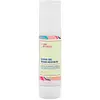What's inside
What's inside
 Key Ingredients
Key Ingredients

 Benefits
Benefits

 Concerns
Concerns

 Ingredients Side-by-side
Ingredients Side-by-side

Water
Skin ConditioningPropanediol
SolventNeopentyl Glycol Diheptanoate
EmollientButyrospermum Parkii Butter
Skin ConditioningCetearyl Alcohol
Emollient1,2-Hexanediol
Skin ConditioningCetearyl Olivate
Macadamia Ternifolia Seed Oil
EmollientGlyceryl Stearate
EmollientSorbitan Olivate
EmulsifyingCetyl Ethylhexanoate
EmollientCarbomer
Emulsion StabilisingTromethamine
BufferingButylene Glycol
HumectantTocopheryl Acetate
AntioxidantSodium Hyaluronate
HumectantEthylhexylglycerin
Skin ConditioningTrisodium Ethylenediamine Disuccinate
Camellia Sinensis Leaf
PerfumingCitric Acid
BufferingWater, Propanediol, Neopentyl Glycol Diheptanoate, Butyrospermum Parkii Butter, Cetearyl Alcohol, 1,2-Hexanediol, Cetearyl Olivate, Macadamia Ternifolia Seed Oil, Glyceryl Stearate, Sorbitan Olivate, Cetyl Ethylhexanoate, Carbomer, Tromethamine, Butylene Glycol, Tocopheryl Acetate, Sodium Hyaluronate, Ethylhexylglycerin, Trisodium Ethylenediamine Disuccinate, Camellia Sinensis Leaf, Citric Acid
Octocrylene 7.6%
UV AbsorberZinc Oxide 6%
Cosmetic ColorantWater
Skin ConditioningCoconut Alkanes
EmollientCalcium Sodium Borosilicate
Butyloctyl Salicylate
Skin ConditioningPropanediol
SolventCetearyl Alcohol
EmollientParfum
MaskingNiacinamide
SmoothingTetrahexyldecyl Ascorbate
AntioxidantJojoba Esters
EmollientLaminaria Digitata Extract
Skin ProtectingAscophyllum Nodosum Extract
Skin ConditioningTocopherol
AntioxidantCaprylhydroxamic Acid
Caprylyl Glycol
EmollientCetyl Alcohol
EmollientCitric Acid
BufferingCoco-Caprylate/Caprate
EmollientCoco-Glucoside
CleansingEthyl Ferulate
AntioxidantGlycerin
HumectantMontmorillonite
AbsorbentSclerotium Gum
Emulsion StabilisingSodium Gluconate
Skin ConditioningSodium Stearoyl Glutamate
CleansingSucrose Distearate
EmollientSucrose Stearate
EmollientXanthan Gum
EmulsifyingOctocrylene 7.6%, Zinc Oxide 6%, Water, Coconut Alkanes, Calcium Sodium Borosilicate, Butyloctyl Salicylate, Propanediol, Cetearyl Alcohol, Parfum, Niacinamide, Tetrahexyldecyl Ascorbate, Jojoba Esters, Laminaria Digitata Extract, Ascophyllum Nodosum Extract, Tocopherol, Caprylhydroxamic Acid, Caprylyl Glycol, Cetyl Alcohol, Citric Acid, Coco-Caprylate/Caprate, Coco-Glucoside, Ethyl Ferulate, Glycerin, Montmorillonite, Sclerotium Gum, Sodium Gluconate, Sodium Stearoyl Glutamate, Sucrose Distearate, Sucrose Stearate, Xanthan Gum
Ingredients Explained
These ingredients are found in both products.
Ingredients higher up in an ingredient list are typically present in a larger amount.
Cetearyl alcohol is a mixture of two fatty alcohols: cetyl alcohol and stearyl alcohol. It is mainly used as an emulsifier. Emulsifiers help prevent the separation of oils and products. Due to its composition, it can also be used to thicken a product or help create foam.
Cetearyl alcohol is an emollient. Emollients help soothe and hydrate the skin by trapping moisture.
Studies show Cetearyl alcohol is non-toxic and non-irritating. The FDA allows products labeled "alcohol-free" to have fatty alcohols.
This ingredient is usually derived from plant oils such as palm, vegetable, or coconut oils. There is debate on whether this ingredient will cause acne.
Due to the fatty acid base, this ingredient may not be Malassezia folliculitis safe.
Learn more about Cetearyl AlcoholCitric Acid is an alpha hydroxy acid (AHA) naturally found in citrus fruits like oranges, lemons, and limes.
Like other AHAs, citric acid can exfoliate skin by breaking down the bonds that hold dead skin cells together. This helps reveal smoother and brighter skin underneath.
However, this exfoliating effect only happens at high concentrations (20%) which can be hard to find in cosmetic products.
Due to this, citric acid is usually included in small amounts as a pH adjuster. This helps keep products slightly more acidic and compatible with skin's natural pH.
In skincare formulas, citric acid can:
While it can provide some skin benefits, research shows lactic acid and glycolic acid are generally more effective and less irritating exfoliants.
Most citric acid used in skincare today is made by fermenting sugars (usually from molasses). This synthetic version is identical to the natural citrus form but easier to stabilize and use in formulations.
Read more about some other popular AHA's here:
Learn more about Citric AcidPropanediol is an all-star ingredient. It softens, hydrates, and smooths the skin.
It’s often used to:
Propanediol is not likely to cause sensitivity and considered safe to use. It is derived from corn or petroleum with a clear color and no scent.
Learn more about PropanediolWater. It's the most common cosmetic ingredient of all. You'll usually see it at the top of ingredient lists, meaning that it makes up the largest part of the product.
So why is it so popular? Water most often acts as a solvent - this means that it helps dissolve other ingredients into the formulation.
You'll also recognize water as that liquid we all need to stay alive. If you see this, drink a glass of water. Stay hydrated!
Learn more about Water